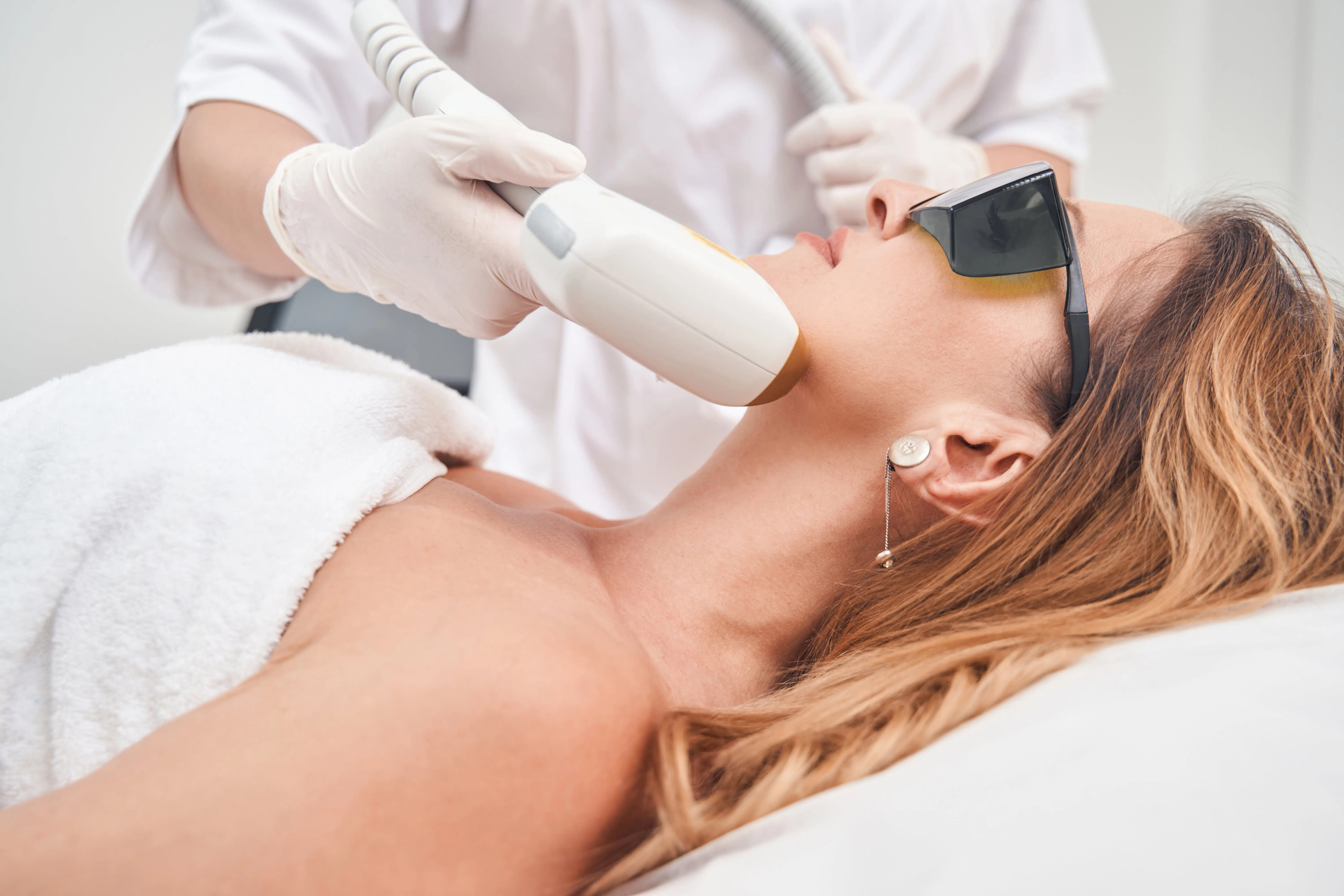
© Adobe Stock
October 9, 2025
Judith Cyriax
The cold months are ideal for various beauty procedures. The reasons: protection from the sun and better conditions for healing, among others. Winter is optimal for these 7 beauty treatments.


© PMC
With
Dr. med. Michaela Montanari und Dr. med. Hanna M. D. Halter
Anyone opting for a plastic-aesthetic procedure usually plans the timing well in advance: When is it most convenient privately, when does the professional situation allow for a potentially longer downtime, and the season also plays an important role in planning. Generally, a cosmetic surgery is possible all year round; however, there are weather-related factors that can affect wound healing and thus the result.
Therefore, specialists recommend having some cosmetic surgeries and aesthetic procedures in winter. The main reasons are protection from the sun and better healing. Why? The cooler months offer better conditions as neither warmth nor heat can worsen swelling, delayed healing, and discomfort during recovery. Additionally, lower UV levels in winter reduce the risk of surgical scars darkening.
Anyone opting for laser treatment to remove pigment spots, scars, or deep wrinkles is advised to schedule this treatment in the cold season. After a laser treatment, the skin is generally very sensitive and particularly light-sensitive. “Exposure to UV radiation can therefore more easily lead to sunburn and further skin damage and, in the worst case, result in unsightly hyperpigmentation,” explains Dr. Michaela Montanari, a plastic-aesthetic surgeon from Bochum.
Ideally, treated skin areas should be protected from direct sunlight for two to three months. If staying in the sun cannot be avoided, the uncovered treatment areas should be covered with a sunscreen with a high sun protection factor. The skin tone also plays a significant role in laser treatment. If the skin is tanned in summer, it absorbs some of the laser pulses, weakening the desired effect of the treatment or making it completely unsuccessful. Since there are fewer sunlight hours and thus lower UV radiation in autumn and winter, it is advisable to have the treatment in the cooler season when the skin is generally lighter.
Chemical peeling is particularly suitable for reducing facial scars, tightening and smoothing the top layer of skin, achieving a fundamental improvement in the skin's appearance, and reducing or even removing wrinkles, discoloration, and pigment spots. Besides the face, it is also used on the neck, back of the hands, and décolleté area, all areas exposed to the sun. But similar to laser treatment, the skin reacts to harmful external influences after a chemical peel. What exactly happens?
"A chemical peel is a controlled chemical exfoliation of the skin, triggered by the application of an acid or acid mixture, such as fruit or salicylic acid," explains Dr. Hanna Halter, a dermatologist and venereologist from Munich. By peeling off the upper layer of skin, the skin becomes more sensitive to light depending on the peel substance, can protect itself poorly against UV radiation, and pigment changes and cell damage occur more easily.
After a chemical peel, it is important to protect the treated skin areas from direct sunlight for several weeks. And since there are fewer sun hours from autumn to spring, a peeling treatment is more suitable for this season than in summer. Moreover, skin stressed by summer can be renewed and built up by a peel in the cooler or cold season. "In summer, only very superficial peels are really unproblematic - and even then only with consistent sun protection," knows the dermatologist.
Lipoma, milia, or skin tags - all these skin changes are harmless but still annoying. From a medical standpoint, they do not need to be removed but present an aesthetic-cosmetic problem for most. With a so-called curettage, the specialist can easily remove the unwanted troublemakers. This involves simply scraping off the skin change, usually under local anesthesia, with a ring curette or sharp spoon.
The advantage for the patient is that stitching is not necessary, which accelerates wound healing, no stitches need to be removed, and scars rarely remain. Additionally, this method can provide material for further histological examination to rule out or confirm malignant changes. However, even these small procedures should not necessarily be performed in summer, as the stressed skin areas are sensitive and hyperpigmentation could occur due to direct UV exposure.
Dr. Halter: "Of course, there are many procedures in operative and cosmetic dermatology that are feasible all year round. Provided one pays attention to skin type, sun protection, and aftercare." According to the dermatologist, these procedures include, for example, injections with botulinum toxin, filler and volume augmentation, microneedling, or mesotherapy.
Another treatment that makes sense in winter is the removal of varicose veins. This way, you can get your legs in shape for the coming summer, and neither spider veins nor enlarged veins will immediately catch the eye when wearing shorter skirts or pants. Another optical advantage: heat makes legs swell faster, varicose veins become more prominent, and the risk of thrombosis increases. No matter which procedure - sclerotherapy, laser therapy, or stripping (removal of varicose veins) - you choose, wearing compression stockings for an extended period is mandatory afterward. On hot summer days, this is rather annoying, but in winter, it is unobtrusive and more comfortable.
Aesthetic procedures on the eyes, like the removal of droopy eyelids and bags under the eyes (medically: blepharoplasty), can be well-scheduled for the winter. One of the main reasons is again UV radiation, as the operated areas should be protected from direct sunlight for about two months. One might argue that sunglasses offer perfect protection and could also hide traces of the operation.
This may seem practical at first glance, but if you wear contact lenses, you will have to do without them for some time after an eyelid lift. If you don't have optical sunglasses, you might encounter problems. Additionally, pollen & co. can cause itchy and irritated eyes for allergy sufferers, which could hinder healing. In this case, the pollen-free winter period would be a better choice.
If you want to have a nose correction (rhinoplasty), it's best to schedule it during the cooler months of the year. The obvious reason: heat can increase the swelling that inevitably occurs after a nose procedure, which can delay the healing process. Additionally, seasonal allergies occur more frequently in summer, which can further irritate the nose. Also, sports activities are off-limits for some time after this procedure, so a dip in the cool pool or a swim in the sea is not recommended yet.
“From autumn, the demand for liposuctions, tummy tucks, upper arm and thigh lifts, as well as breast surgeries increases,” says Dr. Montanari. A main reason for this is certainly the desire for a harmonious body image, as especially in airy summer clothing, unwanted problem areas become visible again. If you schedule one of the mentioned procedures in autumn or winter, the body has enough time to recover from the strains of the operation.
By the warm season, the scars are healed, and the new body silhouette can be shown. Another advantage of a winter procedure is the aftercare measures. Whether you choose liposuction or a lift, compression garments must be worn for at least six weeks, which are very tight and therefore warm. “This can become bothersome in winter, and you can better hide girdles or support pants under long and thicker winter clothing,” reveals the specialist.
"Additionally, warmer temperatures can slightly increase the tendency to swell, which may be perceived as unpleasant." Those who tend to sweat more in the summer should schedule the appointment in the winter. Firstly, because excessive sweating can negatively affect the healing process and irritate the treated areas, and secondly, because showering after an operation is rather cumbersome at first, meaning you cannot perform your usual body care.